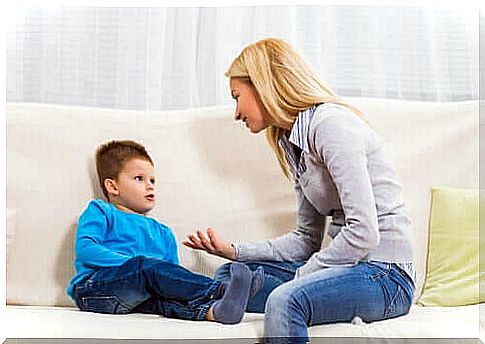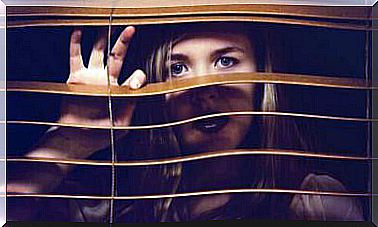Labeling Is Dangerous: Is The Wolf Bad?

Society captures us with its dizzying pace and prevents us from stopping to reflect on what we do and say to our children. How many times have we said or heard the following sentence or a similar one? “Andrew! Bad! Don’t hit your sister . ‘ Sound familiar to you? We do. We have heard it countless times and, probably, we have said it. Labeling someone is very easy.
He certainly behaved badly, but from here to define him “bad”, there is a big difference. One of the most important aspects for becoming aware of this aspect is to distinguish between the act itself, the behavior of the child and, on the other hand, the child. We must distinguish between act and person and, above all, pay close attention to the labels. Let’s see it better with the tale of Little Red Riding Hood and the Big Bad Wolf.

Labeling people is very dangerous
If Andrea’s father says such a phrase, it is because his son has done something wrong and his behavior is not adequate. Now, what is wrong and incorrect is the behavior itself, not Andrea. If we always confuse our children’s behaviors and actions with themselves, we are probably weakening, little by little and without realizing it, their self-esteem.
It is not the same as saying “you are distracted” (as a personality variable) as saying “you are distracted” (behavior). For this , it is particularly interesting that children say that Little Red Riding Hood’s wolf is bad. They give him a personality trait (“he’s bad”), because he wanted to eat Little Red Riding Hood.
The conclusion is quickly made: he wants to eat it because it is bad. And only the bad guys do this kind of thing. And, of course, after reading so many tales with the wolf ( Little Red Riding Hood, The Three Little Pigs, The Wolf and the Seven Kids, Peter and the Wolf , etc.) and that we parents have told them that they are bad because they want to harm protagonists, the wolves have been given the label of villains . But it’s not true.
The wolf, of course, is not bad. The wolf wants to eat Little Red Riding Hood because he is hungry, not because he is bad. If we give our children this explanation, they will have more realistic, healthy and positive expectations. Poor wolves, they have a bad reputation! In this way we will change our judgments.
The art of describing behaviors: the wolf is not bad
Luis Cencillo, philosopher and psychologist, used a very practical concept: resemantization. Resemantization consists in changing one attribution for another more adaptive one. For example, instead of saying that a child is strange and elusive, one can re-semantize (re-label) and call him shy.
But how difficult is it to take off a label once it has been put on, right? A label is very easy to apply, but very difficult to remove. For this, the psychologist Alberto Soler uses the comparison of the labels of the jars. Once we have labeled a child (nervous, bad, awake, co-worker, agitated, etc.), it is very difficult to change this label, despite the evidence to the contrary. For this it is essential to pay a lot of attention.
Human beings tend to label those they meet or the judgments they hear. And, generally, we have a tendency to stick to these labels. Henry Ford said “whether you think you can do it or not, you will still be right”.

Galton’s Story: The Consequences of Having a Label
A classic story used to explain the consequences of taking on a label or role is Galton’s Walk. Francis Galton was the cousin of Charles Darwin. One morning, he decided to walk into a park, thinking of himself that he was the worst person in the world.
He did not speak to anyone, he only thought of himself as a despicable being. What did Galton observe in the people he met along his path? Most people turned away from him and looked at him with a terrified expression. Surprising, right? This is the power of labels.
Returning to the explanation above, why the wolf is not bad, in the same way there are no “bad children”. Nonetheless, it is common to hear “Dude is bad”. Remember that when we are faced with a wrong behavior, there is always a reason that must be listened to and a need that must be respected.
This does not mean that we must justify this attitude, far from it, but try to understand why the child is behaving in a certain way. To do this, the best thing we can do with our children and pupils is to describe their behavior instead of qualifying them.
We reflect on the explanations and labels we attach to our children and their consequences. Our view of things can make their view more flexible, healthy and adaptive.








